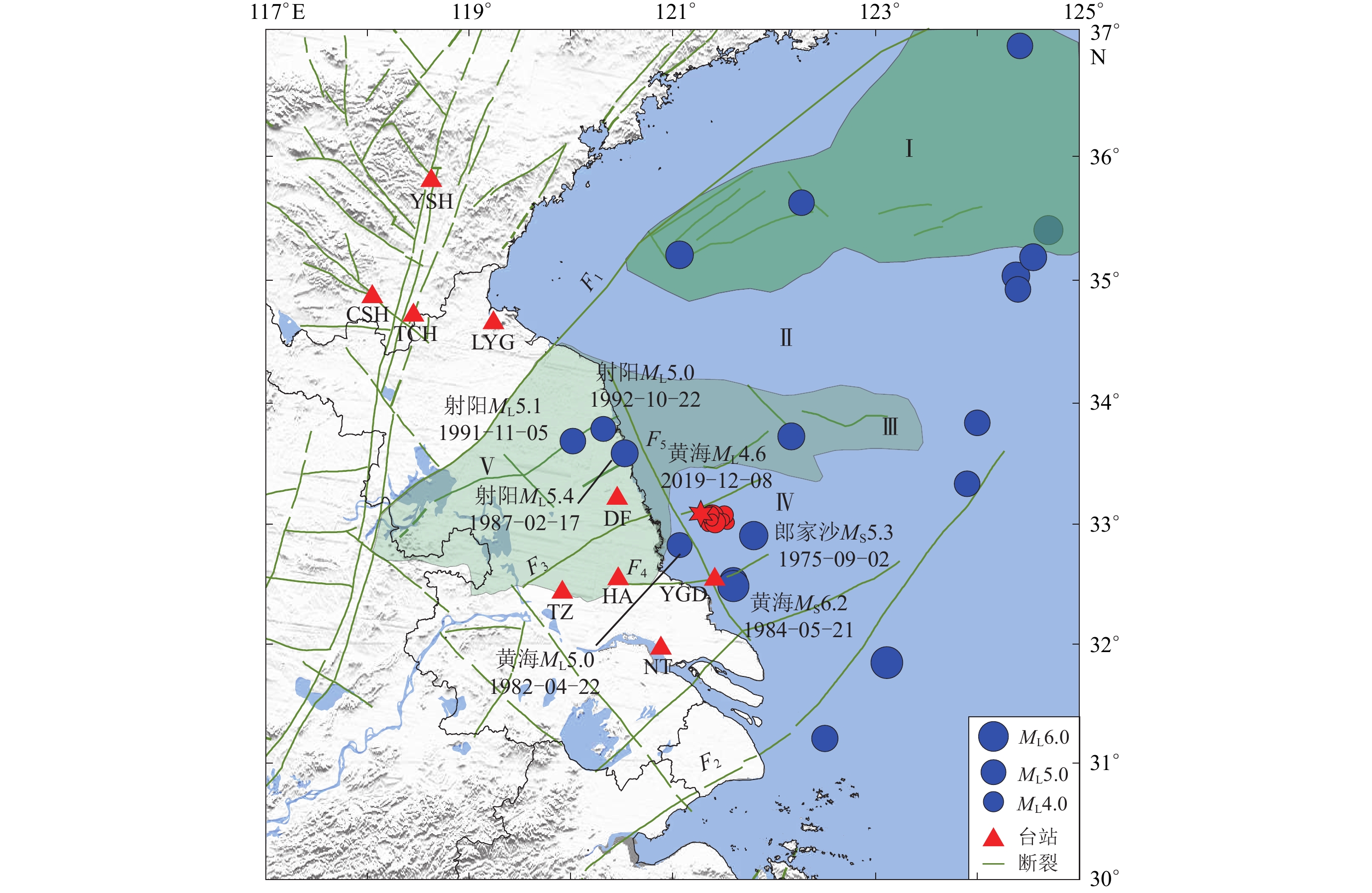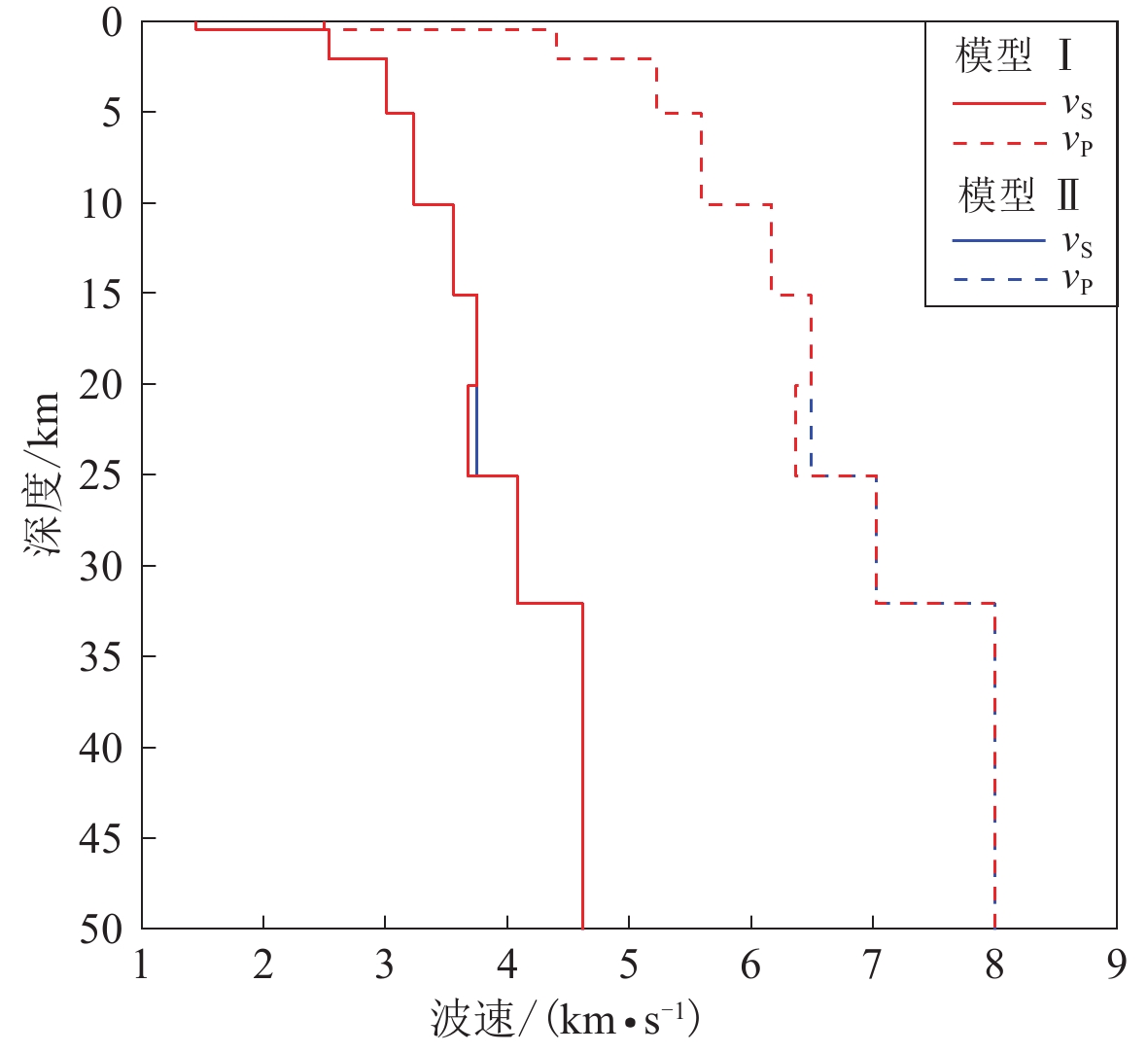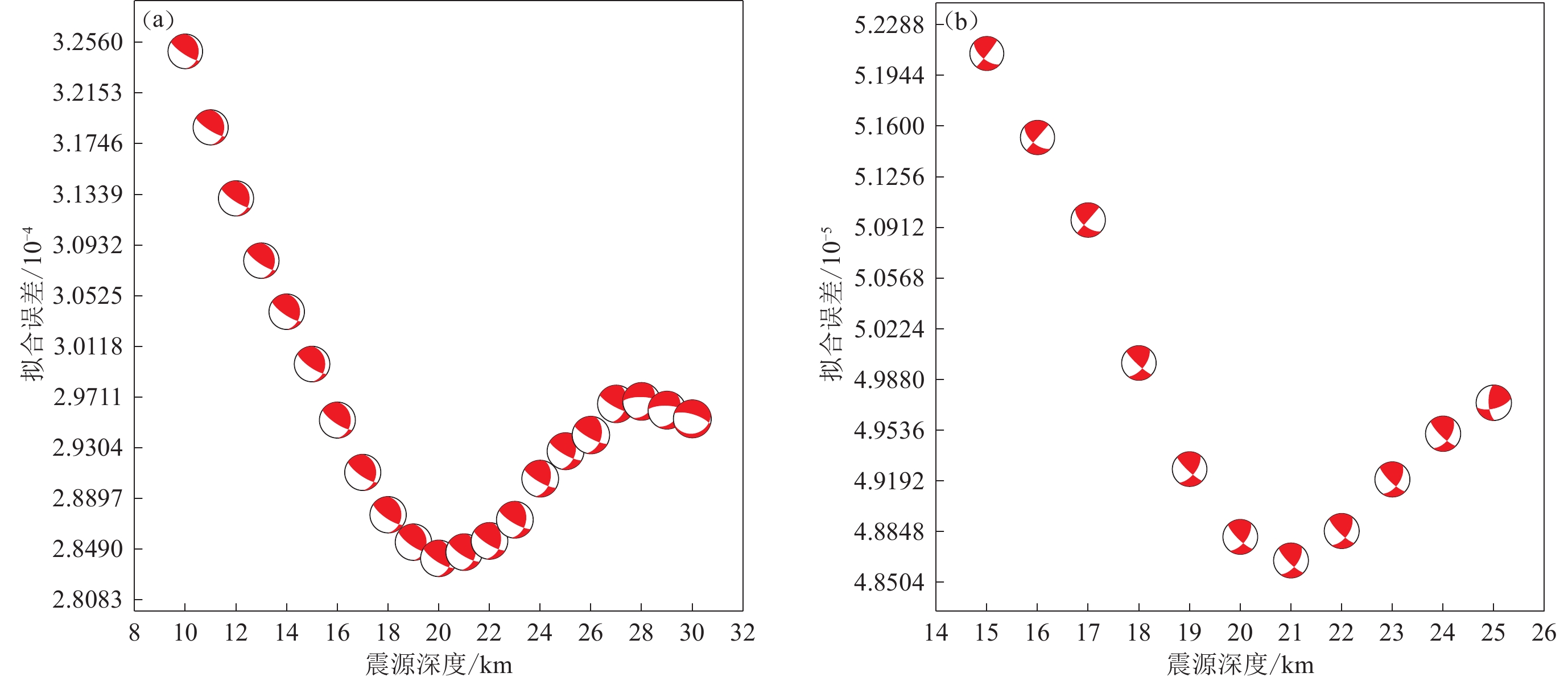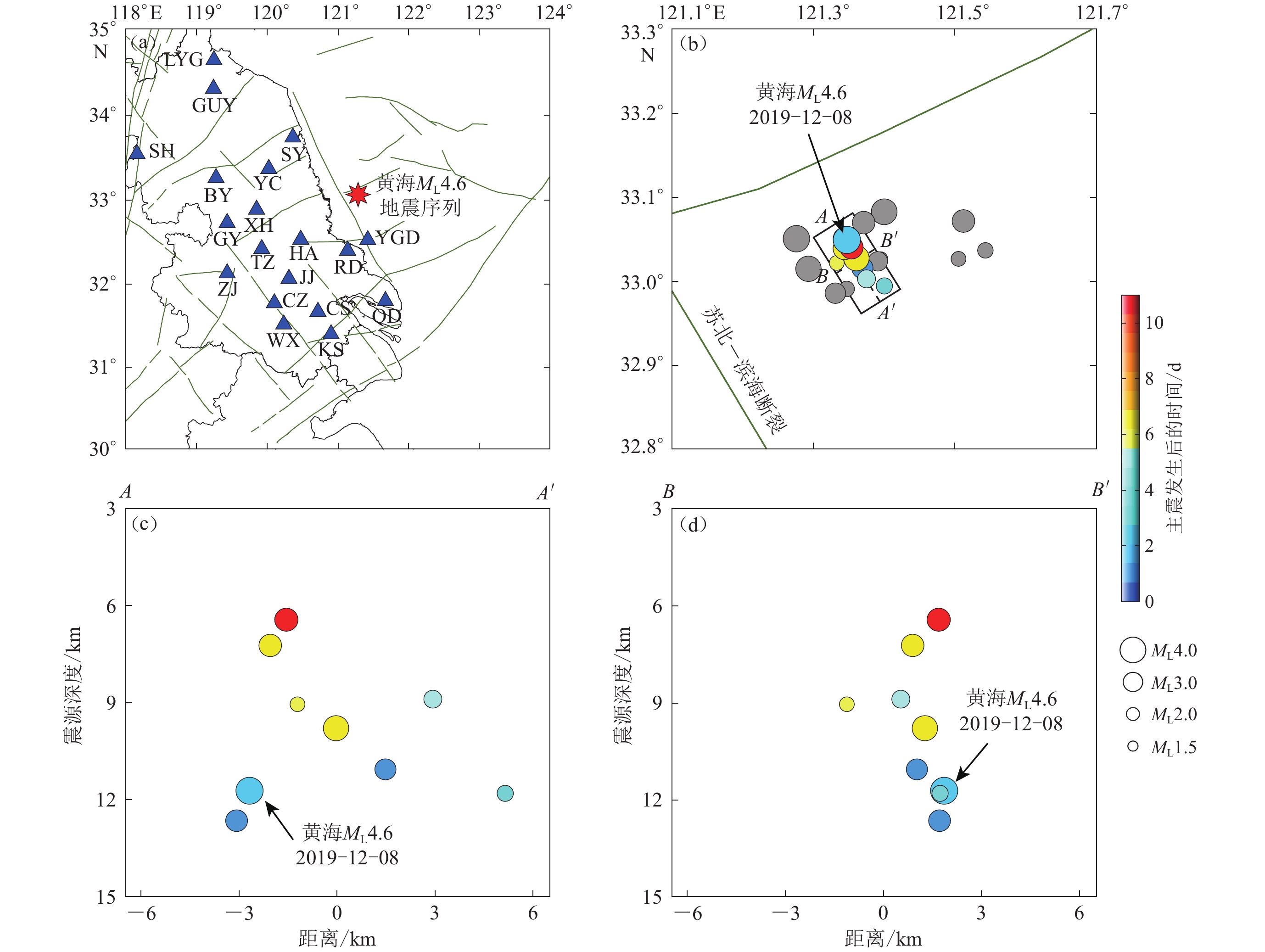Focal mechanism and seismogenic structure of the 2019 Yellow Sea ML4.6 earthquake sequence
-
摘要: 2019年黄海ML4.6地震序列发生在NW向苏北—滨海断裂带附近,历史上该断裂带附近曾多次发生破坏性地震。为了判断此次地震序列的发生是否与苏北—滨海断裂带活动有关,本文基于黄海ML4.6地震震中附近400 km范围内的测震台站记录,采用CAP方法计算了此次黄海地震序列中ML4.6和ML4.1地震的深度和震源机制解参数,并使用双差定位方法对该地震序列进行了重新定位。研究结果显示:2019年12月8日黄海ML4.6和12日黄海ML4.1地震的震源深度分别为20 km和21 km,位于发震区域的脆韧转换带内;黄海ML4.6地震震源机制解节面Ⅰ的走向、倾角、滑动角分别为123°,74°和61°,节面Ⅱ的走向、倾角、滑动角分别为6°,33°和149°;黄海ML4.1地震震源机制解节面Ⅰ的走向、倾角、滑动角分别为135°,77°和32°,节面Ⅱ的走向、倾角、滑动角分别为37°,59°和165°。两次地震的震源机制解节面参数与苏北—滨海断裂带的几何参数并不一致,表明此次黄海地震序列的发生与苏北—滨海断裂带的主断裂活动没有直接关系。黄海地震序列震中的重新定位结果显示该地震序列呈NW向分布。由上述反演所获的两次黄海地震的震源机制和地震序列的重新定位结果推测,黄海ML4.6和ML4.1地震的破裂方向可能为NW向,黄海ML4.6地震序列可能是发生在区域壳内脆韧转换带的左旋走滑地震事件。
-
关键词:
- 2019年黄海ML4.6地震 /
- 震源机制 /
- 苏北—滨海断裂带 /
- 脆韧转换带
Abstract: The 2019 Yellow Sea ML4.6 earthquake sequence occurred near the NW-trending Subei-Binhai fault zone in the Yellow Sea, where occurred many destructive earthquakes in history. In order to determine whether the Yellow Sea earthquake sequence induced by the Subei-Binhai fault zone, we used the digital waveforms of seismic network within 400 km of the epicenter of ML4.6 mainshock, carried out inversion for the focal depth and mechanism of the Yellow Sea ML4.6 earthquake on 8 December 2019 and Yellow Sea ML4.1 earthquake on 12 December 2019 with the CAP method, and then relocated the Yellow Sea earthquake sequence using the HypoDD method. Our result shows that the focal depths of the Yellow Sea ML4.6 and ML4.1 were 20 km and 21 km, suggesting that the two events occurred in the brittle-ductile transition zone within the seismogenic region. For the Yellow Sea ML4.6 event, the strike, slip and rake are 123°, 74°, and 61° for nodal plane Ⅰ , and those are 6°, 33°, 149° for nodal plane Ⅱ , respectively. For the Yellow Sea ML4.1 earthquake, the strike, dip and rake are 135°, 77° and 32° for nodal plane Ⅰ , and those are 37°, 59° and 165° for the nodal plane Ⅱ , respectively. The nodal parameters of source mechanism for the two events are inconsistent with the geometric parameters of the Subei-Binghai fault zone, indicating that the Yellow Sea earthquake sequence has no direct relationship with the main fracture of Subei-Binhai fault zone. The relocation for Yellow Sea earthquake sequence shows that ML4.6 earthquake sequence distributed in NW direction. According to the focal mechanisms from inversion and the relocation of the earthquake sequence, we deduced that the ML4.6 and ML4.1 earthquakes ruptured in NW direction, and the Yellow Sea ML4.6 earthquake sequence is a left-lateral slip event induced by northwestward shearing rupture under tectonic stress field in the brittle-ductile transition zone. -
-
图 1 南黄海盆地区域构造及测震台站和ML≥4.0地震分布
Ⅰ :北部坳陷;Ⅱ :中部隆起;Ⅲ :南部坳陷;Ⅳ :勿南沙隆起;Ⅴ :苏北盆地。F1:淮阴—响水—千里岩断裂;F2:江山—绍兴断裂;F3:陈家堡—小海断裂;F4:栟茶河断裂;F5:苏北—滨海断裂带
Figure 1. Regional tectonic settings of the South Yellow Sea basin region and distribution of seismic stations and ML≥4.0 earthquakes
Ⅰ :Northern depression;Ⅱ :Middle uplift;Ⅲ :Southern depression Ⅳ :Wunansha uplift;Ⅴ :Subei basin. F1:Huaiyin-Xiangshui-Qianliyan fault;F2:Jiangshan-Shaoxing fault;F3:Chenjiabao-Xiaohai fault;F4:Benchahe fault;F5:Subei-Binhai fault zone
图 4 黄海ML4.6 (a)和ML4.1 (b)地震的合成地震波形(红色)与观测波形(黑色)的对比
波形下方的数字依次是理论震相相对观测震相的滑动时间(单位为s)和波形的相关系数,波形左侧为测震台站名称及其震中距(单位为km)
Figure 4. Comparison between synthetic waveforms (red) and observed ones (black) of the Yellow Sea ML4.6 (a) and ML4.1 (b) earthquakes
The numbers below the seismic waveforms show the time difference (unit in s) between the synthetic waveforms and observed ones and their correlation coefficient,respectively. On the left are the station and epicenter (unit in km)
图 5 精定位采用的测震台站分布和黄海地震序列定位前、后的震中分布图
(a) 测震台站分布;(b) 双差定位前、后地震震中分布,其中灰色为双差定位前地震震中;(c) 地震沿AA′剖面的震源深度分布;(d) 地震沿BB′剖面的震源深度分布
Figure 5. Distribution of the seismic stations used in the precise relocation and earthquake epicenters before and after precise relocation
(a) Distribution of seismic stations;(b) Earthquake epicenters before and after precise relocation,where gray dots are the epicenters before relocation;(c) Focal depth along the section AA′;(d) Focal depth along the section BB′
表 1 2019年黄海ML4.6和ML4.1地震的震源机制解参数
Table 1 Focal mechanism solution parameters of the Yellow Sea ML4.6 and ML4.1 earthquakes in 2019
发震时间
年-月-日ML 节面Ⅰ 节面Ⅱ P轴 T 轴 走向/° 倾角/° 滑动角/° 走向/° 倾角/° 滑动角/° 方位角/° 倾角/° 方位角/° 倾角/° 2019-12-08 4.6 123 74 61 6 33 149 235 23 359 52 2019-12-12 4.1 135 77 32 37 59 165 263 12 0.16 31 -
房立华,吴建平,苏金蓉,王毛毛,蒋策,范莉苹,王未来,王长在,谭夏露. 2018. 四川九寨沟MS7.0地震主震及其余震序列精定位[J]. 科学通报,63(7):649–662. Fang L H,Wu J P,Su J R,Wang M M,Jiang C,Fan L P,Wang W L,Wang C Z,Tan X L. 2018. Relocation of mainshock and aftershock sequence of the MS7.0 Sichuan Jiuzhaigou earthquake[J]. Chinese Science Bulletin,63(7):649–662 (in Chinese). doi: 10.1360/N972017-01184
顾勤平,许汉刚,张振亚,赵启光,孟科,杨浩,李丽梅,王金艳. 2017. 栟茶河断裂第四纪活动性最新研究[J]. 国际地震动态,(6):9–11. doi: 10.3969/j.issn.0253-4975.2017.06.003 Gu Q P,Xu H G,Zhang Z Y,Zhao Q G,Meng K,Yang H,Li L M,Wang J Y. 2017. The newest research on the Benchahe fault in Quaternary activity[J]. Recent Developments in Word Seismology,(6):9–11 (in Chinese).
郝天珧,黄松,徐亚,李志伟,张丽莉,王家林,Mancheol S,Kwangkee K. 2010. 关于黄海深部构造的地球物理认识[J]. 地球物理学报,53(6):1315–1326. Hao T Y,Huang S,Xu Y,Li Z W,Zhang L L,Wang J L,Mancheol S,Kwangkee K. 2010. Geophysical understandings on deep structure in Yellow Sea[J]. Chinese Journal of Geophysics,53(6):1315–1326 (in Chinese).
洪德全,赵朋,倪红玉,张炳,汪小厉. 2017. 阜阳MS4.3地震震源深度的确定及地震成因分析[J]. 地球物理学报,60(4):1423–1432. Hong D Q,Zhao P,Ni H Y,Zhang B,Wang X L. 2017. Determination of seismic source depth of Fuyang MS4.3 earthquake and analysis of seismogenesis[J]. Chinese Journal of Geophysics,60(4):1423–1432 (in Chinese).
黄忠贤,胥颐,郝天珧,彭艳菊,郑月军. 2009. 中国东部海域岩石圈结构面波层析成像[J]. 地球物理学报,52(3):653–662. Huang Z X,Xu Y,Hao T Y,Peng Y J,Zheng Y J. 2009. Surface wave tomography of lithospheric structure in the seas of East China[J]. Chinese Journal of Geophysics,52(3):653–662 (in Chinese).
李锋,李迎春,李强,冯志生,王俊菲. 2017. 2016年10月20日射阳MS4.4地震的震源机制与地震序列的时空分布特征[J]. 地震学报,39(5):659–668. doi: 10.11939/jass.2017.05.003 Li F,Li Y C,Li Q,Feng Z S,Wang J F. 2017. Focal mechanism of the Sheyang MS4.4 earthquake on October 20,2016 and the spatio-temporal distribution of the earthquake sequence[J]. Acta Seismologica Sinica,39(5):659–668 (in Chinese).
李锋,缪阿丽,李迎春,李强,叶碧文. 2019. 2018−04−06无为ML4.1地震震源机制和深度及发震构造研究[J]. 大地测量与地球动力学,39(8):790–793. Li F,Miao A L,Li Y C,Li Q,Ye B W. 2019. Focal mechanism and depth and seismogenic structure of the Wuwei ML4.1 earthquake,April 6,2018[J]. Journal of Geodesy and Geodynamics,39(8):790–793 (in Chinese).
李君,王勤彩,郑国栋,刘庚,周辉,周聪. 2019. 2018年5月松原MS5.7地震序列发震断层及应力场特征[J]. 地震学报,41(2):207–218. doi: 10.11939/jass.20180101 Li J,Wang Q C,Zheng G D,Liu G,Zhou H,Zhou C. 2019. Characteristics of seismogenic faults and stress fields of the Songyuan MS5.7 earthquake sequence in May 2018[J]. Acta Seismologica Sinica,41(2):207–218 (in Chinese).
李强,李军,袁丽文,邱毅,李锋,秦双龙,曹轶. 2015. 福建仙游震群序列ML≥4.0事件震源机制与序列活动特征[J]. 地震,35(4):147–156. doi: 10.3969/j.issn.1000-3274.2015.04.016 Li Q,Li J,Yuan L W,Qiu Y,Li F,Qin S L,Cao Y. 2015. Focal mechanisms and activity of ML≥4.0 events in the 2013 Xianyou earthquake swarm sequence in Fujian Province[J]. Earthquake,35(4):147–156 (in Chinese).
刘建达,李清河,张元生,金淑梅. 2009. 江苏中、南部及邻区地震重新定位及在断层研究中的应用[J]. 地球物理学进展,24(1):58–66. Liu J D,Li Q H,Zhang Y S,Jin S M. 2009. Hypocenter relocation in central and southern Jiangsu Province and adjacent areas,China and its application to fault research[J]. Progress in Geophysics,24(1):58–66 (in Chinese).
庞玉茂,张训华,肖国林,温珍河,郭兴伟,侯方辉,朱晓青. 2016. 下扬子南黄海沉积盆地构造地质特征[J]. 地质论评,62(3):604–616. Pang Y M,Zhang X H,Xiao G L,Wen Z H,Guo X W,Hou F H,Zhu X Q. 2016. Structural and geological characteristics of the South Yellow Sea basin in lower Yangtze block[J]. Geological Review,62(3):604–616 (in Chinese).
许忠淮,吴少武. 1997. 南黄海和东海地区现代构造应力场特征的研究[J]. 地球物理学报,40(6):773–781. doi: 10.3321/j.issn:0001-5733.1997.06.006 Xu Z H,Wu S W. 1997. A study on present-day tectonic stress in the southern Yellow Sea and East China Sea region[J]. Acta Geophysica Sinica,40(6):773–781 (in Chinese).
张国民,李丽. 2003. 地壳介质的流变性与孕震模型[J]. 地震地质,25(1):1–10. doi: 10.3969/j.issn.0253-4967.2003.01.001 Zhang G M,Li L. 2003. Rheology of crustal media and a related seismogenic model[J]. Seismology and Geology,25(1):1–10 (in Chinese).
张锁喜,刘建达,张四维. 1990. 下扬子地区地壳速度结构分区模型[J]. 地震学刊,(1):52–61. Zhang S X,Liu J D,Zhang S W. 1990. Crustal structure for the subzone of lower Yangtze[J]. Journal of Seismology,(1):52–61 (in Chinese).
郑勇,马洪生,吕坚,倪四道,李迎春,韦生吉. 2009. 汶川地震强余震(MS≥5.6)的震源机制解及其与发震构造的关系[J]. 中国科学:D辑,39(4):413–426. Zheng Y,Ma H S,Lü J,Ni S D,Li Y C,Wei S J. 2009. Source mechanism of strong aftershocks (MS≥5.6) of the 2008/05/12 Wenchuan earthquake and the implication for seismotectonics[J]. Science in China:Series D,52(6):739–753. doi: 10.1007/s11430-009-0074-3
Han L B,Wu Z L,Jiang C S,Liu J. 2017. Properties of three seismic events in September 2017 in the northern Korean Peninsula from moment tensor inversion[J]. Science Bulletin,62(23):1569–1571. doi: 10.1016/j.scib.2017.11.007
Waldhauser F,Ellsworth W L. 2000. A double-difference earthquake location algorithm:Method and application to the northern Hayward fault,California[J]. Bull Seismol Soc Am,90(6):1353–1368. doi: 10.1785/0120000006
Zhao L S,Helmberger D V. 1994. Source estimation from broadband regional seismograms[J]. Bull Seismol Soc Am,84(1):91–104.
Zhu L P,Helmberger D V. 1996. Advancement in source estimation techniques using broadband regional seismograms[J]. Bull Seismol Soc Am,86(5):1634–1641.
Zhu L P,Rivera L A. 2002. A note on the dynamic and static displacements from a point source in multilayered media[J]. Geophys J Int,148(3):619–627. doi: 10.1046/j.1365-246X.2002.01610.x





 下载:
下载:




